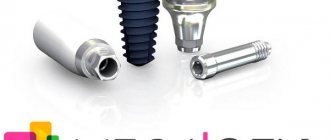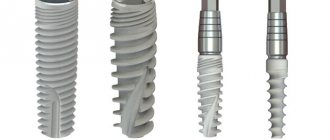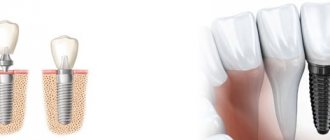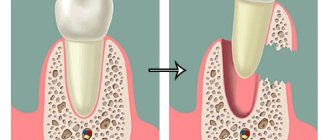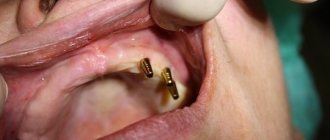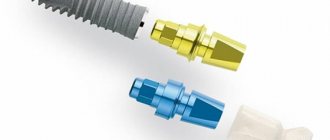1505
Dental implants are one of the ways to restore the functionality of the dentition, both with partial and complete edentia. They can be used when other types of prosthetics do not provide the desired effect.
By using hypoallergenic materials and improving the thread and shape, manufacturers bring the parameters of the artificial root closer to the natural one.
The implant manufacturer Snucone has achieved serious results in this regard, which ensures the survival of the structure in almost 100% of cases.
The history of Snucone implants
In Russia, the name of the South Korean company Snucone is not a household name, but this company has existed since 1997 - not every dental company can boast of such a long history.
In 2005, together with German colleagues, the company began producing implants. At first they were sold only in Korea, but in 2011 the company signed agreements with Italy, China, Iran and the Russian Federation - the implants entered the international market and were warmly received by the dental community.
Snucone appeared in our country not so long ago, so in order to get as much useful information as possible, Astghik Arutovna Muselimyan, an orthopedic dentist, surgeon, implantologist, who holds the position of chief physician at the Moscow dental clinic Smartline, answers patients’ questions.
Question to the dentist:
Why do you use Snucone implants?
I have been working with Snucone implants for over 7 years. Patients implanted at the Smartline Clinic are constantly monitored, visiting us twice a year, during which I conduct an examination and take x-rays to assess the condition of the implants. The results that Snucone implants show simply amaze me. Despite their long service life, the tissue around them remains stable and does not collapse.
Advantages
The main idea of the Korean Snucone implants is to combine the advantages of dozens of other implantation systems in one design. When the company signed an agreement with German specialists in 2005, it received the opportunity to use several technological innovations. Thanks to this, Snucone implants have the following advantages:
- Survival rate in 98% of cases . Such a high percentage was confirmed during a five-year study at the Department of Oral and Maxillofacial Surgery in South Korea, that is, this is not a theoretical, but a very specific figure.
- Long service life . Clinical observations show that Snukon implants behave absolutely stably, without causing changes in surrounding tissues for ten years or more.
- No inflammation . The most common cause of implant failure is bacteria entering the jawbone. Thanks to the special connection between the implant and the abutment (the connecting link between the implant and the crown) in Snucone designs, the chance of inflammation is reduced to almost zero.
- Stable immediately after installation . Due to the tapered design, when placed in soft bone, it is compacted, thereby achieving primary stabilization. It can usually be replaced with a temporary crown immediately, so you never have to go a day without a tooth.
- Quick installation . Due to the fact that the implants have a double thread, rapid and non-traumatic immersion into the bone occurs.
- Affordable price . There are many more expensive systems on the market, but Snucon implants are in no way inferior to them, and at the same time keep the price at an affordable level due to a special South Korean approach to production.
Question to the dentist : For which clinical cases are Snukon implants best suited?
Snucone implants can be used in any clinical cases, thanks to the availability of implants of different designs in the arsenal.
For example, in the posterior part of the upper jaw, where the maxillary sinus is located, there is often little bone in height and it has a loose structure, so traditional implants cannot be installed without bone augmentation. Snucone specialists have developed short implants with a unique design that are easily fixed in such conditions and show excellent results.
If the width of the jaw bone is insufficient, the ridge splitting technique is often used, in which implants are simultaneously installed.
When using conventional aggressive implants, the bone often breaks and causes complications. Conical implants created by Snucone can be placed completely safely in clefts, maintaining the integrity of the bone walls and achieving excellent stability.
The most common complication of implantation is bone destruction at the neck of the implants. The neck is the part of the implant located closer to the surface of the bone. Destruction occurs due to a lack of bone volume in this area, so when installing implants, bone is often built up. In such operations, it is definitely important that the bone material is firmly fixed in the area of the implant neck. This important factor is also taken into account by Snucone specialists. The taper and smooth design of the neck of the implants allow the bone to be retained in this area and its growth to be achieved.
Advantages of Snucone implants with SLA surface
- identity to the human bone structure, which allows achieving high results even if the patient’s bone quality is poor;
- possibility of functional loading immediately after installation of implants;
- structural features allow the load to be transferred from the abutment to the implant body;
- installation of such implants makes it possible to shorten the healing period;
- the presence of an internal elongated Morse cone ensures complete tightness of the implant shaft;
- The implants have double threads and are self-tapping, so they sink into the bone easily and quickly.
Design features of Snukon implants
All of the above advantages are possible thanks to the design features of Korean Snukon implants. Classic features are the root-like shape and the use of an abutment for a better connection to the crown. But this applies to almost all implants, so Snucone also has more original solutions.
Rough surface for quick healing
In 1998, dentists developed the SLA surface, which was a real breakthrough in implantation.
It turns out as follows:
- The titanium root is treated with an abrasive jet, which roughens the smooth surface.
- After treatment, the implant is washed and etched with acid, which creates microscopic pores.
- Finally, the acid is neutralized and thoroughly washed off, and the finished implant is sterilized with gamma rays and packaged in a sealed container.
Why should the implant surface be porous? The fact is that the bone simply cannot grow normally to a smooth surface. But in the smallest pores, the bone tissue will grow very quickly, since it will have something to cling to - this ensures engraftment in 3-4 months. For comparison, previously implants took at least six months to take root, and during this time it was not even possible to put a temporary crown on them.
Special thread for strong fixation
Many modern companies produce implants with single threads. But Snucone uses double thread technology.
Why is double thread needed? This design makes it faster and easier to screw in the implant. The double thread causes less damage to the bone and at the same time allows the implant to immediately hold tightly in the jaw so that a temporary crown can be placed on it.
Another feature of the Snucone implant thread is its square section. Several studies were conducted in South Korea that showed that such a thread better distributes the chewing load and minimizes bone loss, which means it increases the service life of implants several times.
Cone-shaped connection with anti-inflammatory abutment
An abutment is an element that connects the prosthesis and the implant. The connection between the abutment and the implant is a vulnerable point - infection can easily enter the bone through it. This will cause inflammation, called peri-implantitis, and cause implant failure.
To prevent inflammation from occurring, Sucone implants use a special connection - a Morse taper, which allows the abutment to wedge into the implant, creating a tightness.
Switching platforms to preserve bone and gums
Many modern implants have a problem - over time, the gums and bone at the very edge of the crown begin to decrease, which is why the abutment or neck of the implant becomes visible. This spoils the aesthetics, especially in the smile area. This happens because the thickness of the soft tissue around the implant is much less than around a natural tooth.
To avoid this, Snucone implants use platform switching. This is a special technology in which the abutment is less wide than the width of the implant, and expands only to the point of connection with the crown. The narrow part of the abutment allows you to create a large natural volume of gum around it and prevents tissue loss. For the patient, this means that his artificial teeth will look natural for decades.
Implants made of pure titanium
The Snucone company uses only medical grade 4 titanium in its products, which is completely hypoallergenic and safe for the body.
Features of Snucone implants with SLA surface
The surface is called SLA for a reason, because the name hides the technology for producing implants. To make the titanium surface as rough as possible, it is roughly treated with aluminum oxide (sandblasting). Then, to obtain thin micro-grooves, the product is subjected to intensive etching in acid. At the same time, there are no micropores on the surface of the implant, which eliminates the possibility of bacterial growth. The resulting surface is chemically active and hydrophilic, which ensures complete and high-quality osseointegration.
Indications for implantation
Implantation of Snucone is indicated in the following cases:
- The absence of one tooth in the dentition. A tooth can be lost a long time ago or removed right before implantation.
- Absence of all teeth on the jaw.
- Missing several teeth in a row - you can install a bridge on several implants without grinding down healthy teeth.
- The need to place an implant simultaneously with bone grafting.
- Desire to place a temporary prosthesis immediately after implantation.
Question to the dentist : Is it possible to place Snukon implants on older people or teenagers?
Dental implants can be placed starting from the age of 19 for girls and from the age of 20 for boys. At this age, it is first necessary to take an x-ray of the wrist joint and monitor the completion of bone formation from cartilage.
Old age is not a reason for refusing implantation to people if there are no general health contraindications.
Design features
To ensure good survival of the design, the brand introduces innovative technologies. The brand independently develops titanium alloy manufacturing technologies.
There are a number of features when implanting Snucone rods:
- SLA surface. The titanium rod undergoes coarse sandblasting. As a result, the product acquires a porous top layer and the adaptation process is accelerated.
- Microdesign. The implant is securely fixed using double self-tapping threads. Accelerated implantation procedure. The square profile prevents pressure on the bone.
- Morse cone. The elongated cone prevents pathogens from penetrating into the bone tissue.
- Possibility of subcrystal installation. Reduces the risk of resorption.
- Using a Lindemann cutter. Drilling bone tissue without overheating. Minimizing pain.
- Torque wrench. Torque force prevents the destruction of the dentition.
The combination of these features increases the rate of engraftment of the artificial rod.
Implant models
Snucone today offers two series of implants.
Abiding Fixture Plus I
This series is designed for installation in soft bone (as a rule, this is the bone in a person’s lower jaw). Their diameter ranges from 3.5 to 6.8 mm. Models with a diameter of 3.5 and 4 mm can be installed together with an alveolar ridge split. Wider implants are suitable for installation in the sockets of lateral teeth immediately after their removal. The length of implants in this line is from 7 to 14 mm, selected depending on the condition of the patient’s bone tissue.
The AF+I series implants provide good compaction of soft bone and can be immediately fitted with temporary crowns.
Abiding Fixture Plus II
This series is intended for implantation into high-density bone. The stability in it is usually high in itself, but such bone decreases much faster due to load, so AF+II implants distribute it much better within the tissues.
The diameter of the implants ranges from 3.5 to 4.8, the length also from 7 to 14.
Additional components
In addition to the implants themselves, the Snukon company offers plugs, gum formers and abutments of various shapes and sizes: straight, angled, screw, spherical, etc.
Overview characteristics
The brand produces two series of products intended for different clinical cases:
- Abiding Fixture Plus I (AF+I). Titanium rods used to restore the dentition of the lower jaw. Rod length – 7-14 mm. Diameter – up to 4 mm. Products with narrow or wide diameters are used. They are distinguished by the aesthetics of implantation and a long wearing period. The conical shape allows the product to be carefully implanted without damaging the bone. Immediate implantation is allowed on molars.
- Abiding Fixture Plus II (AF+II). Used in high density bones. Length – up to 14 mm, and diameter – 4.8 mm. When installed in the lower jaw, it is allowed to increase the load on the rod after two months. For the upper jaw, the duration increases to 2.5 – 3 months. An immediate load is permissible when screwing in a structure with a rectangular notch. The absence of threads at the top of the implant prevents tissue infection.
Both Snucone series allow the possibility of implantation using two methods:
- Two-stage. This involves removing the tooth and installing a rod into the healed socket.
- One-step protocol. The rod is implanted after extraction of the unit. There are a number of restrictions on the procedure.
Indications and contraindications
The procedure for installing a dental structure is permissible if there are indications:
- complete edentia;
- removing two or more adjacent elements in a row;
- the need for a sinus lift;
- unit extraction;
- installation of a removable orthopedic structure.
There are a number of restrictions on the implantation of an artificial rod:
- heart disease;
- diabetes mellitus, oncology;
- CNS diseases;
- lack of sufficient bone height and volume;
- abnormal bite and increased abrasion of enamel;
- bruxism;
- jaw defects;
- lack of caries sanitation.
Duration of operation
According to the manufacturer, dental products can last up to 10 years. At the same time, the service life of a metal-ceramic crown is up to five years. Porcelain crowns require no less careful handling.
Patients who dream of strong and beautiful teeth should pay attention to structures made of zirconium dioxide. They can last up to 10 years.
The longevity of the product depends on daily oral care and regular dental visits.
How is implantation performed using the Snucone system?
Implantation is a full-fledged surgical operation, although visually it seems insignificant. It requires lengthy preparation and consists of several stages.
Preparation for implantation
It all starts with the first visit to the dentist. The patient, together with the doctor, selects the appropriate type of implantation; the doctor takes an x-ray and selects implants based on the condition of your bone tissue. Also at this stage, the patient is sent for tests to make sure that he does not have HIV, diabetes or other serious diseases in which implantation is contraindicated or must be performed with extreme caution.
After the implantation technique has been chosen, it is necessary to sanitize the oral cavity - fill carious teeth, relieve gum inflammation, etc. This is necessary to ensure that there are no pockets of inflammation in the mouth, bacteria from which can adversely affect the implant’s healing.
The duration of this stage depends on the condition of the oral cavity and can take either a week or a month.
Bone grafting
This is an optional, but often necessary stage of implantation. The fact is that if a tooth is lost a long time ago, the bone tissue gradually decreases. As a result, the bone becomes too thin - there is simply no room left for the implant. To create the required volume of bone, you have to replant it separately. In some cases, bone tissue growth can take 3-4 months - and during this time you will have to walk without implants.
Snucone implants sometimes allow implantation to be performed simultaneously with bone grafting, such as a sinus lift (bone grafting in the upper jaw) or ridge augmentation (splitting) (if the bone is too narrow).
The implantation itself
Implantation itself is the shortest stage, which takes only 30-60 minutes. It is divided into several more separate steps:
- The patient sits in the dental chair, the doctor gives him anesthesia. Modern anesthetics allow you to completely avoid pain during implantation.
- The doctor makes a puncture on the mucous membrane, then drills out the bone using the drill included in the kit.
- An implant is implanted into the resulting hole.
- If necessary, several implants can be installed during one operation. The gum is sutured to stop bleeding.
- Abutments or gum formers, and sometimes temporary crowns, are installed on the implants.
After the procedure, the patient can go home immediately.
In some clinics, implantation is done using surgical templates. These are special overlays for the patient’s jaw, in which holes are made for implants. The onlays are made based on a computer model and allow you to install the implants as accurately as possible and at the desired angle.
Question for the dentist : How long does implantation take using the Snucone system?
The operation to install one implant takes on average 20-30 minutes. To a large extent, this depends on the precise planning of the operation. Before implantation, it is important to undergo X-ray diagnostics - take a panoramic image or computed tomography and accurately calculate the direction of implant installation, as well as select the correct diameter and length of the implant, assess bone density and select an implant of the required design. And of course, the speed and success of the operation depend on the experience and manual skills of the surgeon.
Implant healing
This is more likely not a stage, but a forced pause in implantation. During the healing period, the patient can walk with a temporary crown and lead a normal life, periodically visiting the dentist for examination. The stage lasts 3 – 4 months depending on the condition of the patient’s bone.
Question to the dentist : Is it possible to use Snukon implants in one-stage and one-stage implantation?
Immediate is the immediate installation of an implant into the socket of an extracted tooth. Typically, this technique is used in the anterior part of the jaws, where there is a need for one-stage prosthetics with a temporary crown. Snukon engineers have developed implants for installation in the socket of extracted teeth. They have a tapered shape and a specific thread design that allows for excellent implant fixation even with a small amount of bone. The rough surface of Snukon implants, similar to the bone structure, allows the implants to integrate quickly and predictably, including during immediate implantation, when the implant is fixed only at the tip, and its main surface does not have contact with the bone.
Prosthetics
When the implant has completely taken root in the jaw, it will no longer be possible to install a light plastic one, but a full-fledged prosthesis. To do this, the patient comes to the clinic, where impressions of his jaws are taken. After this, a crown is made in the laboratory, which is fixed to the implant with special cement.
When a permanent prosthesis is installed in a patient, the implantation can be considered completely completed. A person receives a full-fledged artificial tooth, which is visually and functionally no different from the real one.
Question to the dentist : How long do Snukon implants actually take to take root?
Since the bone has different densities in different parts of the jaws, the healing time of the implants is different. In the lower jaw, where dense bone is typically found, integration takes an average of 3 months, while in the upper jaw it takes 4.5 months due to the softer bone structure.
Question to the dentist: Is it possible to immediately install temporary dentures on them so as not to go without a tooth?
In aesthetically important areas, a temporary crown is installed on the implant immediately. Typically these are front teeth that require immediate aesthetic restoration.
It is also possible to place temporary crowns when three or more implants are combined. For example, when we install six implants on the lower jaw with complete absence of teeth, we immediately make a removable or bridge-like temporary prosthesis, fixing it on these implants.
Question to the dentist : What dentures can be placed on Snukon implants?
The Snukon system has orthopedic components that allow prosthetics to be performed in accordance with the highest world standards. The presence of titanium bases makes it possible to produce screw-retained crowns and avoid cementing the crown in the oral cavity, since the presence of cement residues on the surface of the crown or implant causes inflammation and tissue destruction. Components are also available to enable the production of individual abutments. An abutment is an intermediate link between a dental implant and the tooth crown. An abutment is called a custom one because it is made based on the shape of the gums around the implant. Such an abutment allows you to obtain an exact fit to the gum and avoid its sagging, ensuring long-term tissue stability.
Also, the Snukon system has all the necessary components that allow for high-quality prosthetics with removable and non-removable structures on implants.
Rehabilitation after implantation
We have already seen that implantation is a serious surgical operation. Therefore, after it the patient will need to go through a recovery stage. Fortunately, Snookon implants are installed with minimal trauma to the gums and bone, so recovery is usually easy.
In the first few days, the patient may experience pain, the gums become swollen and red. The dentist prescribes antiseptic rinses, painkillers and anti-inflammatory drugs, and cold compresses. If you follow the doctor’s recommendations, then after 3-4 days the pain will completely disappear and the swelling will subside. The recommendation is written in the passport that the patient receives after implantation.
But this will not be the end of rehabilitation. In order for the body to recover, within a week after the procedure you should not:
- Taking hot baths, going to the sauna and bathhouse, sunbathing in the open sun - due to high temperatures, wounds heal worse, bleeding may open and inflammation may develop.
- Subject the body to strong physical stress.
- Brush your teeth intensively in the area where the implant is installed.
Also, it is not recommended to chew solid food (nuts, crackers, etc.) while wearing the temporary crown.
Prosthetics on Snukon implants
Thanks to the wide variety of abutments, South Korean Snukon implants can be used to install almost any prosthesis.
Most often, patients are concerned about the loss of one tooth; in this case, the dentist installs a single implant with a crown. The crown can be made of different materials:
- Metal ceramics . Inexpensive and quite durable option, quite suitable for chewing teeth. Unfortunately, due to the opaque frame, such teeth look unnatural and will look bad in the smile area.
- Solid ceramics . A very aesthetic material with natural transparency and the ability to create smooth color transitions, like a real tooth. It is slightly more fragile than metal ceramics, so it is not suitable for installation on chewing teeth. But it looks great on the incisors and canines in the smile area.
- Zirconium dioxide . The most expensive material, both aesthetic and durable. Unlike metal ceramics, it never causes allergies, does not lose aesthetics over time, and lasts almost as long as implants. Suitable for both front and back teeth.
In addition to a single crown, a bridge can be placed on Snucone implants. If several teeth are missing in a row, two implants are placed at the edges of the defect, and several interconnected crowns are fixed on them. You can also implant several implants at once and put new teeth even on a completely toothless jaw.
Design features of the Snukon implant
The main feature of these implants is the SLA surface. It was developed back in the 90s by Straumann and since then has been actively used in all modern implantation systems. To create such a surface, Grade 4 titanium is treated first with a jet of sand and water, and then with a special acid. This allows you to create a rough surface with small depressions, which improves osseointegration rates by 3-4 times and reduces the implant healing time to 3-4 months. A similar surface is used in implants MIS, AstraTech and others.
The second feature of implants is modern double thread. This increases the number of turns and allows the implant to be inserted into the bone more quickly with minimal tissue trauma. The cross-sectional thread is square - this reduces the load under lateral shear and compression loads, which was confirmed by a study by Jaejin Kim from Chungnam National University
To ensure a tighter connection to the abutment, Snucone implants use Morse Taper, a self-locking connection widely known in mechanics. As a result, there are no gaps left through which the infection could penetrate into the jawbone.
All implants are designed so that they can be placed either classically or subcrestally, that is, completely recessing the implant along with the neck into the bone. This method is used by some dentists to reduce bone loss in the implantation area.
For dentists, it will be a plus that the implantation kit comes with Lindemann cutters. For the patient, this means a quick operation without discomfort or pain.
Almost all of these solutions are not new and have already been used in various implantation systems. Snucone simply combined them to create a more advanced design.
How long do dentures on implants last?
The service life of an artificial structure depends not only on the implant, but also on the material of the prosthesis. The lining of metal-ceramic crowns chips off over time, so they require replacement after 4 to 5 years. With proper care and gentle handling, ceramic crowns last longer, but can also chip or crack. Zirconium dioxide crowns are very durable and typically last at least 10 years.
Implants have a longer service life than dentures. With proper oral hygiene and quitting smoking, even 10 years is far from the limit. If the prosthesis breaks, the implant will remain in the jaw, and another structure can easily be placed on it.
We use the latest implantation technologies
If you are planning to undergo dental implantation and you are still looking for the optimal option for implantation systems, then Valadent dentistry advises you to pay special attention to Snucone implants with an SLA surface. Our specialists practice this technology, so they can not only tell you about it in detail, but also professionally install these implants. If you value quality and reliability above all, then Snucone implants with SLA surface are definitely for you!
Cost of implants
Discounts and Promotions



